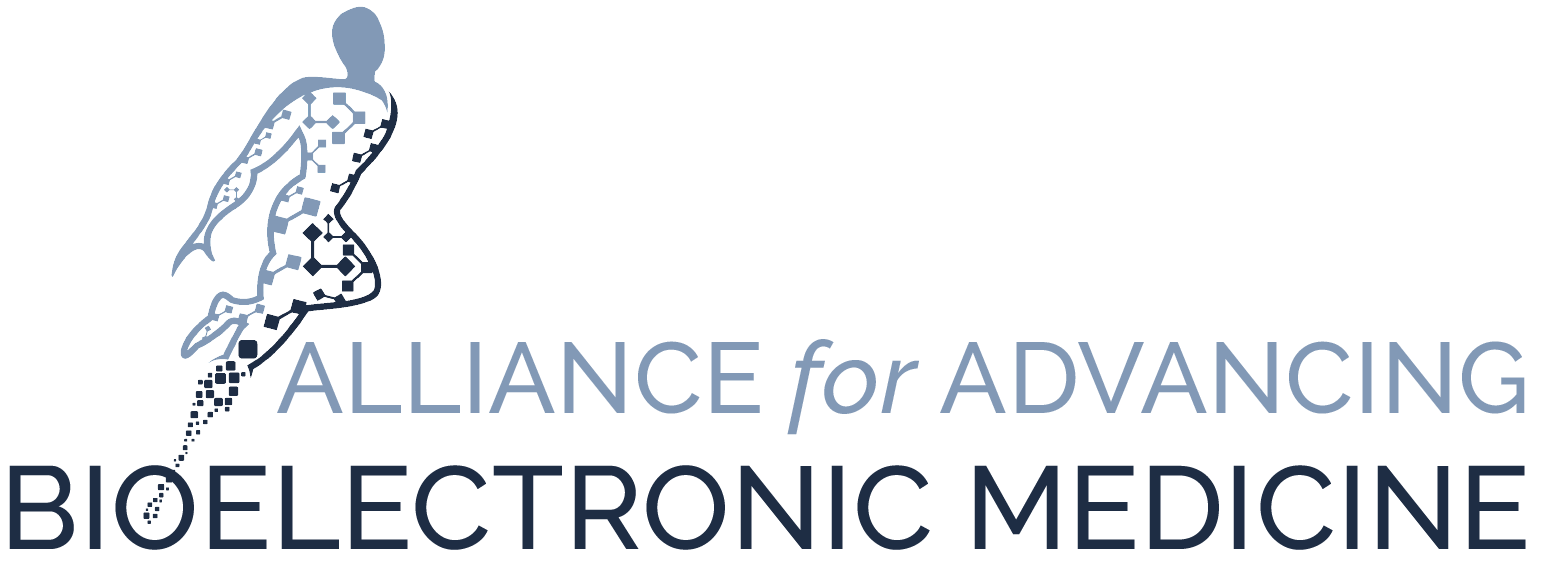about us
At the crossroad of healthcare and technology
The Alliance for Advancing Bioelectronic Medicine (AABM) is an independent network of professionals dedicated to innovation at the intersection of healthcare and technology.
Our goal is to raise awareness of bioelectronic medicine and to build a platform for collaboration among stakeholders, both within and outside the field.
We welcome others working in this diverse field to join our efforts.
Alliance members include leading experts from organizations creating innovative diagnostics and treatments across a broad range of disease areas.
“By linking the body’s electrical systems with novel engineering systems, the field of bioelectronic medicine melds advanced engineering with biology to diagnose and treat disease.”
The most advanced field in healthcare
What is Bioelectronic Medicine?
Bioelectronic medicine is one of the most innovative and exciting fields in healthcare, with the potential to transform diagnosis and care for millions of people. These treatments can provide important advantages, harnessing the body’s own natural mechanisms to address the core causes of disease and deliver advances in areas of unmet need, including challenging conditions such as Parkinson's disease, major depressive disorder, treatment-resistant epilepsy, heart arrhythmia, and chronic pain.
Our Aspirations
Why now?
By targeting the core causes of disease and continuously optimizing treatment for an individual, bioelectronic medicine represents a new era in healthcare. However, stakeholders in the field – including companies, research institutes, universities, investors, and others – are fragmented, with relatively little collaboration on shared interests. Outside the field, awareness and support among healthcare professionals, patients, policymakers, payers, and others remain limited. As a result, current policy, regulation, and investment do not fully support the field's growth.
At the core of tomorrow’s health systems
Saving lives and improving health outcomes.
Common applications like pacemakers, vagus nerve stimulators, and spinal cord stimulators are already used by millions of patients—and proven to improve health outcomes. Research has found that vagus nerve stimulation can reduce epileptic seizures by 20-50%, implanted cardiac devices can reduce the risk of mortality by 40%, and spinal cord stimulation can achieve relief for chronic pain in 60-80% of cases.
Delivering value for patients and health systems.
By improving care for chronic conditions, bioelectronic medicine can help to avoid costly ER usage and hospitalizations. For example, atrial fibrillation ablation has been found to reduce arrhythmic hospitalization by 56% and hospitalization for heart failure by43%, realizing huge cost savings for patients and payers.
Meeting patients’ needs in challenging disease areas.
Bioelectronic medicine researchers are steadily driving advances on some of the greatest challenges in healthcare, including treatment-resistant depression, PTSD, chronic pain, and Parkinson’s disease. Bioelectronic medicine has the potential to address the immense unmet need in these areas, offering hope to patients and families.
A fast-growing healthcare field.
Bioelectronic medicine attracts investment, creates jobs, and delivers benefits to the healthcare industry. This market is projected to more than double from $22.6 billion in 2019 to more than $60 billion in 2029.
Growing the Bioelectronic Medicine Movement
ALIGN
Convene key stakeholders to align on shared goals for a new era in medicine.
MOBILIZE
Engage patients and physicians to advocate for changes in healthcare policy and practice.
BUILD
Build awareness among other audiences, including policymakers, investors, media, and general public.









